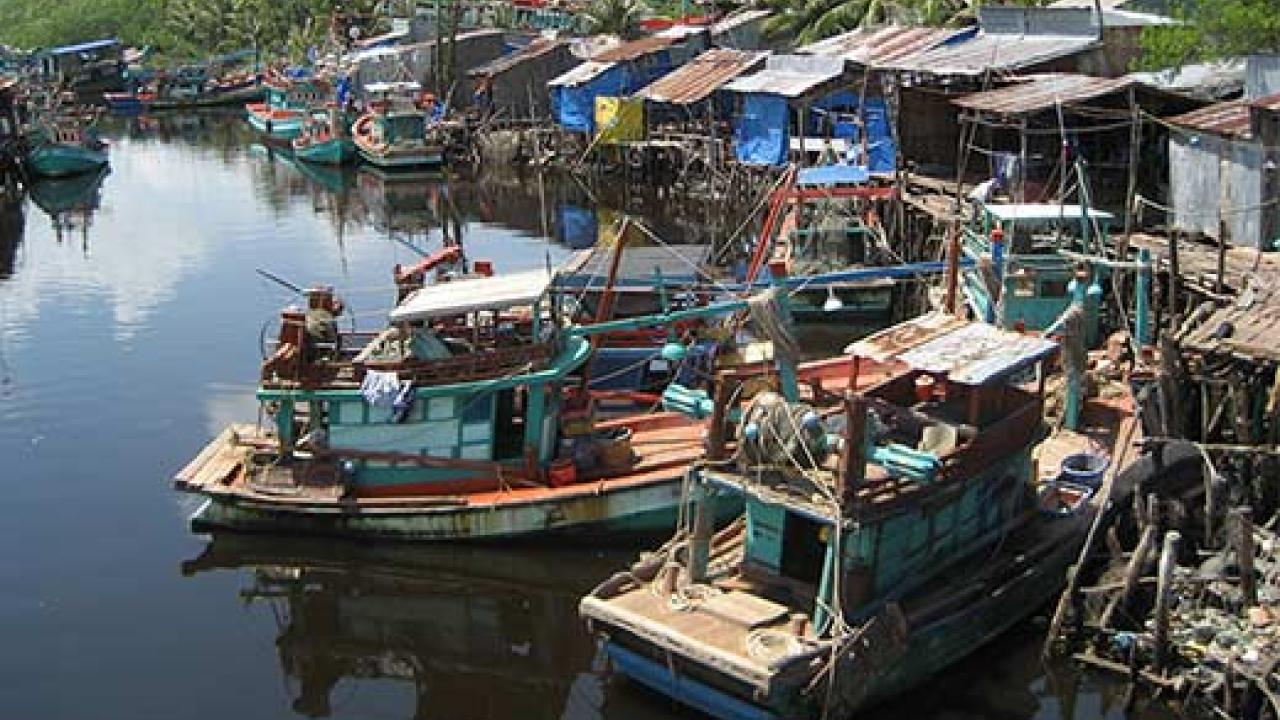Demand for seafood from wild fisheries and aquaculture around the world has nearly doubled over the past four decades. In the past several years, major retailers in developed countries have committed to source their seafood from only sustainably certified fisheries and aquaculture, even though it is not clear where that supply will come from.
A team of researchers led by the University of California, Davis, has focused its attention on fishery improvement projects, or FIPs, which are designed to bring seafood from wild fisheries to the certified market, with only a promise of sustainability in the future. They conclude that FIPs need to be fine tuned to ensure that fisheries are delivering on their promises.
The researchers’ policy forum titled “Secure Sustainable Seafood from Developing Countries” will be published May 1 in the journal Science. The related abstract and podcast are available online at: http://www.sciencemag.org/content/348/6234/504.summary
“We’re cautiously optimistic that fishery improvement projects, which fast-track access to international markets, can lead to sustainable fisheries, especially in developing countries,” said UC Davis Professor James Sanchirico, associate director of the UC Davis Coastal and Marine Sciences Institute.
Encouraging sustainable seafood
Retailers like Walmart in the U.S. and Sainsbury’s in the U.K. have promised that soon all the fresh, frozen, farmed and wild seafood they sell will come from sustainable sources. Respected, private third-party certifying programs like the Marine Stewardship Council are helping to ensure compliance with meaningful sustainability standards designed to help conserve fish populations and protect oceans.
While many of the sustainability standards have been met by commercial fisheries in the developed world, fisheries overseen by developing countries make up only 7 percent of MSC-certified fisheries, even though these developing-country fisheries account for about half of all seafood entering the international market.
Fishery improvement projects
Fishery improvement projects aim to get fisheries on a path to sustainability and potentially certification by the MSC. These projects involve partnerships between the fishermen and firms up and down the international seafood supply chain. A critical objective of the partnerships is to create market incentives for improvements by allowing seafood from these developing-country fisheries to enter the potentially more lucrative export market for certified seafood.
“It is hoped that the projects will protect marine life and ecosystems in areas where local and national governments have not acted to oversee sustainable practices, while also satisfying the demand for sustainable seafood,” said Gabriel Sampson, UC Davis graduate student and lead author of the study.
Potential ‘race to the bottom’ in standards
Sampson and colleagues report that seafood from two-thirds of developing-world fisheries enrolled in fishery improvement projects is already being bought by retailers, intending to satisfy their sustainability commitments while making little progress in improving their management.
Fishery management reforms should include data collection and ongoing monitoring, strengthening harvest and access rights to the resources, limits on the catch, and instituting traceability throughout the supply chain, the researchers say. If access to the fisheries is not better regulated, the current efforts by retailers to secure sustainable, wild-caught seafood could stimulate a “race to fish” and ultimately undermine the sustainability claims.
Without the proper safeguards to ensure progress and reforms in fishery improvement projects, fisheries with full sustainability certification could find their market benefits diluted by the increased competition for a share of the global certified seafood market.
Having multiple types of certified seafood in the market could lead to a “race to the bottom” in sustainability standards, unless the fishery improvement projects are carefully monitored to make sure that seafood retailers closely adhere to the sustainable-improvement requirements for market access.
“The retailers and organizations involved with managing fishery improvement projects need to insist on progress toward reforms from the fishery as a condition for purchasing seafood from that fishery,” Sanchirico said.
“This would likely lead to more durable conservation and greater assurance for consumers that marketing claims of ‘sustainable’ seafood are valid,” he said.
Authors on the commentary were Gabriel Sampson, James N. Sanchirico, and J. Edward Taylor of UC Davis; Cathy A. Roheim of the University of Idaho, Moscow; Simon R. Bush of Wageningen University in the Netherlands; Edward H. Allison of the University of Washington, Seattle; James L. Anderson of the University of Florida, Gainesville; Natalie C. Ban of the University of Victoria in Canada; Rod Fujita of the Environmental Defense Fund; Stacy Jupiter of the Wildlife Conservation Society; and Jono R. Wilson of The Nature Conservancy.
Media Resources
Pat Bailey, Research news (emphasis: agricultural and nutritional sciences, and veterinary medicine), 530-219-9640, pjbailey@ucdavis.edu
Jim Sanchirico, Environmental Science and Policy, 530-754-9883, jsanchirico@ucdavis.edu
Simon Bush, Wageningen University, the Netherlands, 0317-483310, simon.bush@wur.nl
J. Edward Taylor, Agricultural and Resource Economics, (530) 564-0443, jetaylor@ucdavis.edu
